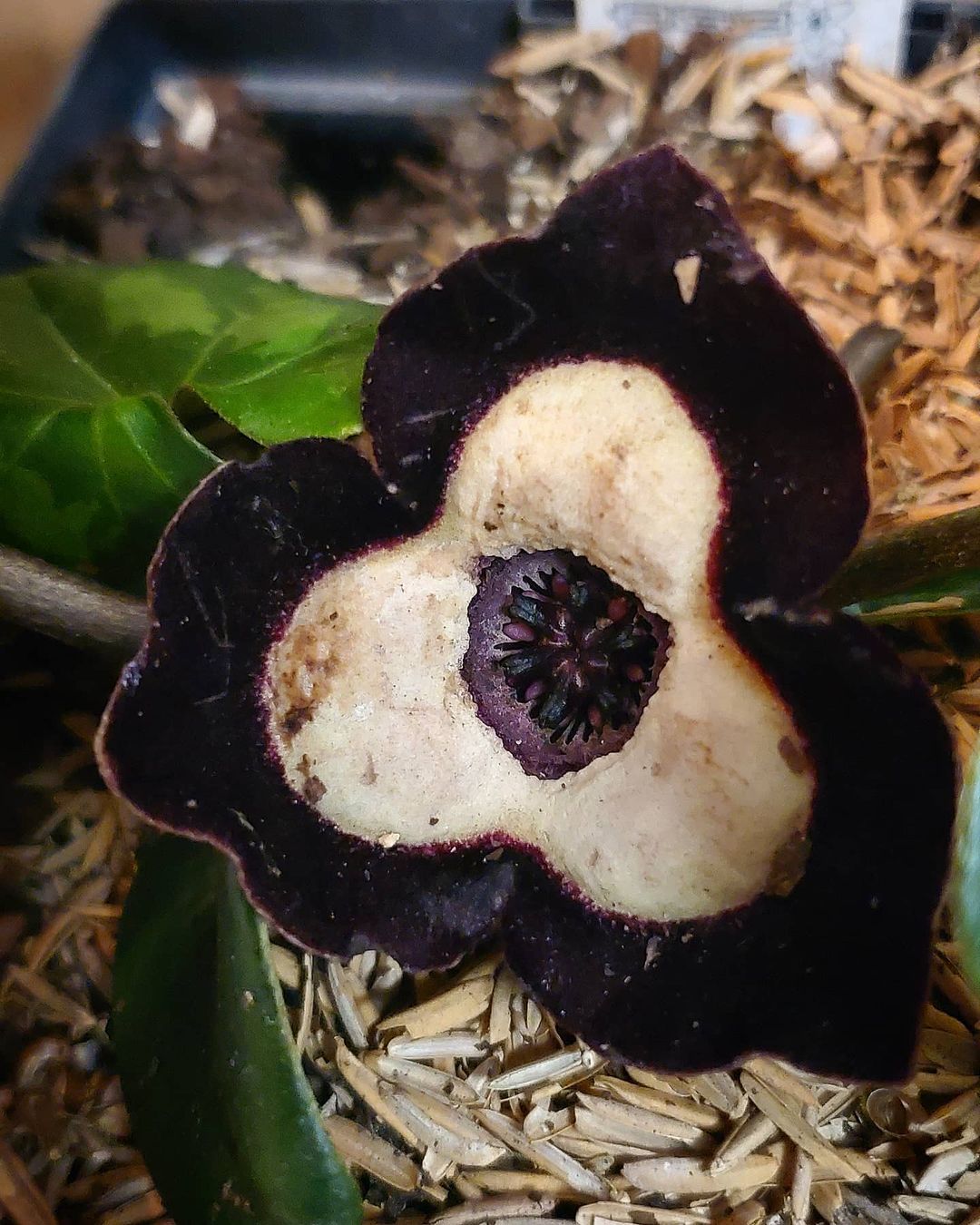Explore this Shampoo Ginger Lily Plant Growing and Care Guide for including this versatile plant in your home garden.
If you want to include a distinct-looking versatile plant in your garden, then this plant is for you. Follow the expert tips in Shampoo Ginger Lily Plant Growing and Care Guide for an exotic feel in your yard.
Common Name: Pinecone ginger, Shampoo ginger, Bitter ginger, Awapuhi kuahiwi (in Hawaii), Wild ginger, Pinecone lily, and Lampoyang (in Malaysia and Indonesia)
Botanical Name: Zingiber zerumbet
USDA Zones: 8-11
Check out Costus Barbatus Care and Growing Guide
Shampoo Ginger Lily Plant Profile
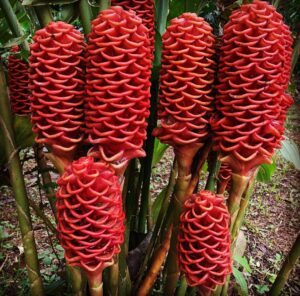
The Shampoo Ginger Lily (Zingiber zerumbet), a member of the Zingiberaceae family alongside ginger and turmeric, is a captivating tropical plant native to Southeast Asia, including regions like India, Indonesia, and Malaysia.
Its striking appearance features tall stems that can reach up to 6 to 8 feet in its native environment. Its impressive leaves, spanning 1 to 2 feet long, are glossy and deep green, arranged alternately along the stems fan-like, lending a touch of the tropics to any setting. The plant earns its common name “Shampoo Ginger” from the fragrant liquid contained within its large, cone-shaped inflorescences.
Check Costus Igneus Uses and Benefits
Shampoo Ginger Lily Flowers
The distinct Shampoo Ginger Lily inflorescences are cone-shaped clusters of vibrant bracts that contain fragrant, aromatic liquid. Historically used as a natural shampoo and conditioner, these bracts encase inconspicuous flowers with potential health benefits. This multi-purpose feature adds to the plant’s tropical charm and cultural significance.
Check Lollipop Plant Growing and Care Guide
How to Propagate Shampoo Ginger Lily Plants
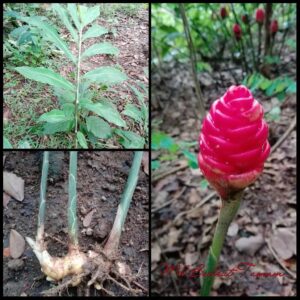
Shampoo Ginger Lily plants can be grown through roots and seeds; the easiest method to grow this plant is from rhizomes.
- Use a cluster of mature rhizomes with multiple buds.
- Cut rhizomes into sections with a sharp knife. Each piece should have multiple buds.
- Allow cut sections to air dry for a few days.
- Soak rhizome pieces in warm water overnight.
- Mix equal parts of potting soil and compost in a 5-gallon container.
- Fill the container with the moist, nutrient-rich mixture.
- Plant rhizome pieces about half an inch deep. Ensure buds face upwards during planting.
- Place the container indoors in a warm, sheltered spot with filtered light.
- In colder areas, position the container under full sun.
- Keep soil consistently moist; water when the surface feels dry.
- Apply organic fertilizer twice weekly until rhizomes sprout.
Check Hoya Rangsan Growing and Care Guide
Ideal Growing Conditions for Shampoo Ginger Lily
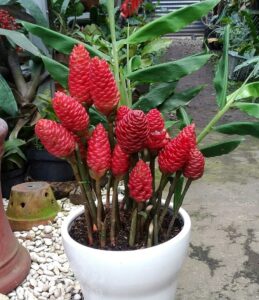
Location
Choose a bright, indirect light spot for your Shampoo Ginger Lily plants. It thrives indoors near east or north-facing windows or outdoors in partial shade. This replicates its tropical habitat, ensuring healthy growth and beautiful inflorescences.
Soil
Use well-draining soil for your Shampoo Ginger Lily. A mix with good drainage prevents waterlogging and supports healthy root growth. Ensure the soil pH for your Shampoo Ginger Lily is mildly acidic to slightly neutral, ideally ranging from 5.5 to 7.0.
Watering
Water your Shampoo Ginger Lily when the top inch of soil is dry to the touch. Avoid overwatering to prevent root rot, which is crucial, especially when growing indoors.
Temperature and Humidity
Maintain temperatures between 70°F to 90°F (21°C to 32°C) for optimal growth. Avoid prolonged exposure to temperatures below 50°F (10°C) as the plant is sensitive to cold.
Aim for humidity levels around 60% to 70% or higher. This mimics the plant’s natural habitat and encourages healthy growth.
Regularly mist the foliage to elevate humidity levels around the plant, especially if you’re growing it indoors.
Note: While growing Shampoo Ginger Lily indoors, avoid cold drafts and keep a constant temperature.
Check Chrysanthemum Morifolium Care and Growing Guide
Shampoo Ginger Plant Care
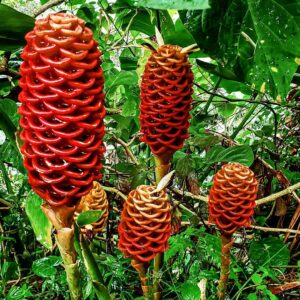
Fertilizer
For the best growth, use a balanced slow-release granular fertilizer in a ratio of 14-14-14 or 10-10-10. If you’re using liquid fertilizer, follow the instructions on the label to make it weaker.
Apply the fertilizer on the plant at the start of the growing season (spring) and again in the middle of summer. Follow the instructions on the label for proper use.
TIP: Applying too much fertilizer can actually harm your plant more than not using enough. If you notice the leaves turning yellow, it might be a sign that you’ve over-fertilized. After applying granular fertilizer, make sure to water the plant well. This helps distribute the nutrients evenly and prevents any potential damage to the roots.
Pests and Diseases
The Shampoo Ginger Lily plant usually doesn’t have many problems with pests or diseases.
But sometimes, tiny bugs like aphids and mites can bother the young, soft parts of the plant. Once in a while, you might also find Aleurodicus dispersus, spiraled whiteflies, or cardamom root grubs on the plant.
The Shampoo Ginger Lily can develop root rot when it receives excessive watering or when planted in poorly draining soil. This condition shows as brown, mushy roots and may cause wilting or yellowing leaves.
Fungal infections also affect the plant, leading to issues like leaf spots, which display as discolored patches on the leaves, and rust, characterized by the emergence of orange or reddish-brown pustules, usually on the undersides of the leaves.
Check Ylang-Ylang Tree Growing and Care Guide
Zingiber Zerumbet Uses
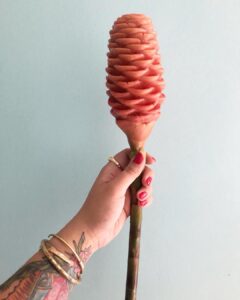
- One of the most interesting aspects of the Shampoo Ginger Lily is its practical use.
- The plant gets its common name, “Shampoo Ginger,” because its large, cone-shaped inflorescences contain a fragrant liquid that has been traditionally used as a natural shampoo and conditioner.
- The liquid is derived by crushing or pounding the inflorescence, releasing the cleansing properties.
- Apart from its cosmetic use, the Shampoo Ginger Lily also holds a place in traditional medicine for its potential health benefits.
- Shampoo Ginger is a useful plant that you can use in many ways, such as shampoo, conditioner, and even oil for massages on your hair and body. Just remember, the results can be different for each person.
- This plant is also popular for its anti-inflammatory qualities.
Check Skeleton Flower Growing and Care Guide
FAQs
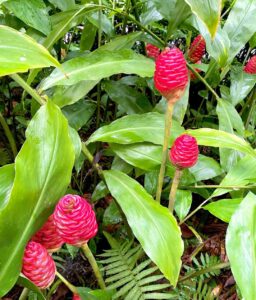
Q.1. Can I grow Shampoo Ginger Lilies indoors?
A: While it’s possible to grow Shampoo Ginger Lilies indoors, they can be challenging to maintain due to their size and humidity requirements. They are better suited for outdoor cultivation in tropical or subtropical climates.
Q.2. Can I harvest the liquid from the bracts for use as shampoo?
A: Yes, you can harvest the liquid from the cone-shaped bracts of the Shampoo Ginger plant for use as a natural shampoo or body wash. However, be mindful not to over-harvest, as it can affect the plant’s health and ability to produce flowers.
Q. 3. Is the liquid from the Shampoo Ginger Lily safe for all skin types?
A: The liquid from the flowers are generally considered safe for most skin types, but it’s a good idea to do a patch test before using it extensively. If any irritation occurs, discontinue use.
Q.4. Can you use Shampoo Ginger Lily as shampoo?
A: When you press these flowers, they release a nice-smelling, milky-white, see-through liquid. This liquid can be used to clean your hair, like shampoo or conditioner.
Q.5. How to use shampoo ginger lily on hair?
A: One really interesting thing about Zingiber zerumbet plants is that you can get liquid from their flowers to use as shampoo. They’re called shampoo ginger for a reason! When the flower changes color from green to deep red, you can gently squeeze the liquid out and save it in a jar for shampooing later.
Check Philodendron Orange Marmalade Care and Growing Guide


